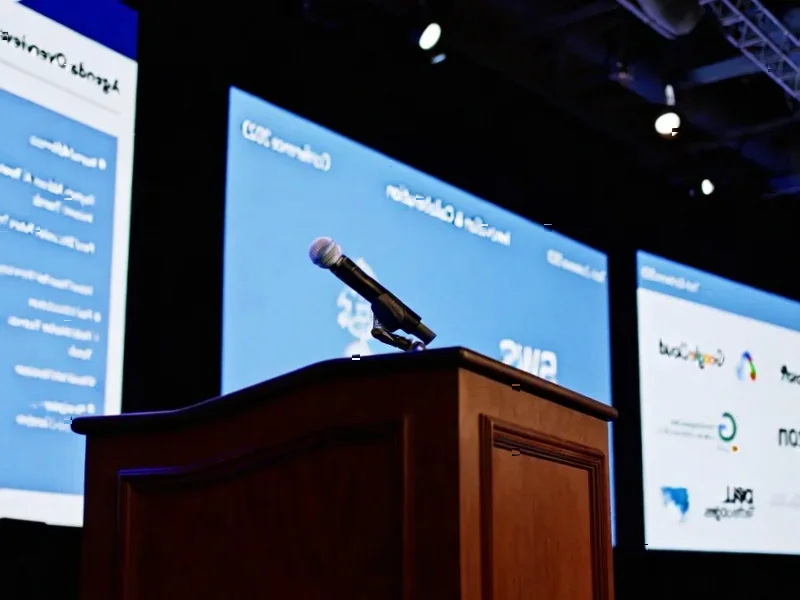According to TheRegister.com, former Intel CEO Pat Gelsinger has joined Christian technology platform Gloo as his next major venture following his departure from Intel less than a year ago. The platform aims to connect the faith ecosystem through various services for pastoral tasks and is developing large language models specifically trained with Christian values and content. Gelsinger compares AI’s potential impact to Gutenberg’s printing press, which powered the Protestant Reformation by democratizing access to religious texts. The platform includes quality assurance processes to monitor how AI affects users’ spiritual health and aims to be acceptable across Christian denominations while avoiding theological and political positions.
The Technical Reality of “Faith-Based” AI
Gelsinger’s vision faces fundamental technical challenges that go beyond typical AI development. Large language models operate on statistical pattern recognition from training data, not genuine understanding or belief systems. When training models to reflect specific religious values, developers must navigate the inherent biases and limitations of their training datasets. The selection of which Christian texts, interpretations, and theological perspectives to include becomes itself a theological statement, regardless of claims to neutrality.
More critically, LLMs cannot genuinely embody spiritual experiences or divine inspiration—they can only simulate religious language based on patterns in human-written content. This creates a fundamental tension for religious applications where authenticity and spiritual truth are paramount. The technology’s well-documented issues with factual accuracy and tendency toward confabulation present particular risks when applied to matters of faith and doctrine.
When Technology Meets Theology: Historical Parallels
Gelsinger’s printing press analogy reveals both the promise and peril of his mission. The Reformation that Gutenberg’s press enabled didn’t create religious unity—it accelerated fragmentation into thousands of denominations with conflicting interpretations of the same text. As historical analysis shows, democratizing access to religious texts through technology often amplifies existing divisions rather than healing them.
The parallel with Father Charles Coughlin’s radio ministry in the 1930s serves as a cautionary tale about how religious messaging at scale can have unintended consequences. Modern AI systems could potentially amplify extreme interpretations or create new theological divisions through their content generation capabilities. The very attempt to create a “neutral” Christian AI platform may prove impossible given Christianity’s deeply divided history on fundamental questions of doctrine and practice.
Who Stands to Gain—and Lose—in Christian AI
For church leaders and religious organizations, AI tools could offer practical benefits in administrative tasks, content creation, and community management. Smaller congregations with limited resources might find AI-assisted sermon preparation or pastoral care resources particularly valuable. However, these same tools could threaten the perceived authenticity of religious leadership and raise questions about the role of human spiritual guidance.
For technology investors and Silicon Valley, Gelsinger’s move represents the growing “faith tech” sector’s potential. Yet the commercial application of AI to religious contexts raises unique ethical questions about monetizing faith and the potential for exploiting religious communities. The tension between Silicon Valley’s growth-at-all-costs mentality and religious traditions’ emphasis on spiritual values creates a challenging operational environment.
The Business Case for Religious AI
The global Christian market represents a significant economic opportunity, with religious organizations, publishing, media, and education forming a multi-billion dollar ecosystem. AI platforms that can effectively serve this market while respecting its values could capture substantial value. However, the fragmentation of Christianity into thousands of denominations with different theological positions makes creating universally acceptable solutions exceptionally difficult.
Success in this space requires navigating not just technical challenges but deep cultural and theological sensitivities. Platforms that appear to favor certain theological traditions over others risk alienating substantial portions of their potential market. The business model itself—whether subscription-based, donation-supported, or advertising-funded—will also face scrutiny from communities often skeptical of commercial interests in religious matters.
Realistic Expectations for Faith-Based AI
While AI can certainly assist with practical religious functions like scheduling, communication, and content management, its ability to genuinely contribute to spiritual formation remains questionable. The most likely successful applications will be those that augment rather than replace human religious leadership and community.
Gelsinger’s ambitious vision faces the reality that technology has historically amplified both the best and worst of religious impulses. As contemporary debates show, even seemingly straightforward technological adoption in religious contexts quickly becomes entangled with deeper theological questions. The success of Christian AI will depend less on technical sophistication and more on its ability to navigate two thousand years of theological complexity and human diversity.




